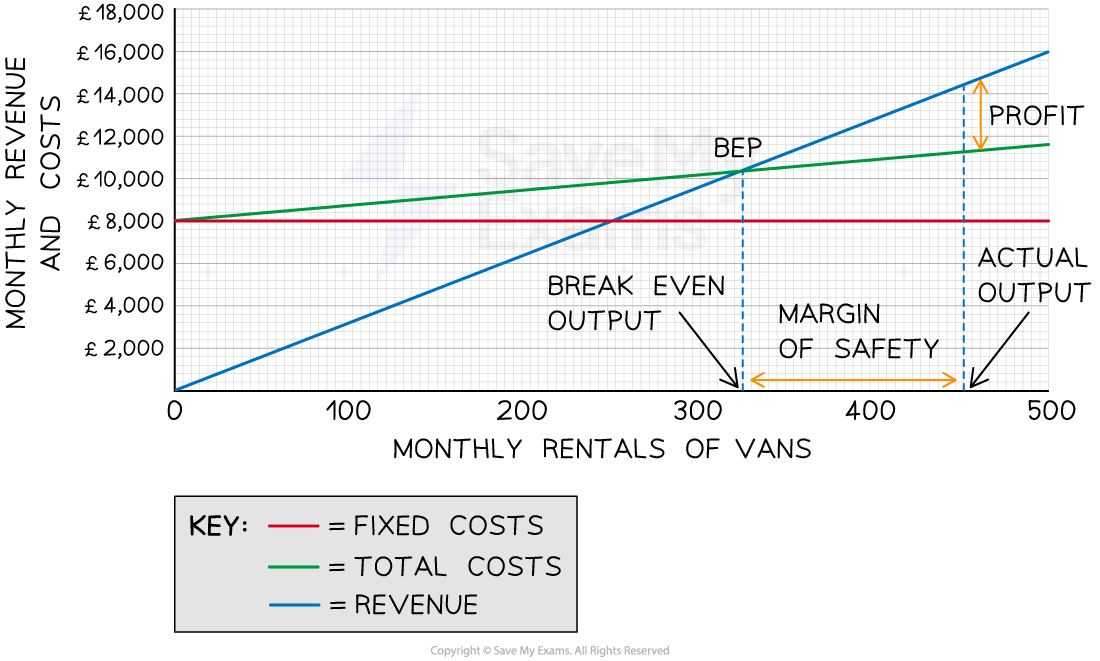Using Contribution to Calculate the Break Even Point
- The contribution value is used to calculate the Break Even Point
- The Break Even Point is where a total revenue earned for a product is exactly equal to its total costs and where the business is making neither a profit nor a loss
- The break even point is expressed as several units (e.g. the number of scented candles)
- Identifying the break even point allows a business to understand how many items it needs to produce and sell to cover all costs before it starts to make a profit
- Each subsequent unit sold past this point will generate profit for the business
Worked example
Selected Cost and Revenue data for Canterbury Glamping
| £ | |
|
Revenue per pod per night |
95 |
|
Variable costs per pod per night |
19 |
|
Annual fixed costs |
55,000 |
Using the information in the table, calculate how many pods need to be occupied each month for Canterbury Glamping to break even. (4)
Step 1 - State the formula to calculate the break even point
(1 mark)
Step 2 - Calculate the contribution
Selling price - variable cost per unit
= £95 - £19
= £76 (1 mark)
Step 3 - Apply the formula to calculate the break even point
= 723.68 (1 mark)
Step 4 - Always round UP to the nearest whole number because only whole products can be sold
723.68
= 724 camping pods (1 mark)



